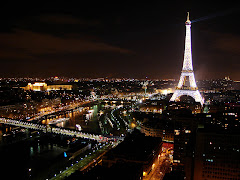Although this palace was only briefly the home of royalty, it is still magnificent by most standards. Located in the very heart of central Paris, in the 1st arrondissement, from here it’s mere steps to the Seine, the Louvre, and Paris’ main attractions.
Although many visitors to Paris miss it, behind the Palais Royal is a long garden, encircled by shops, art galleries and restaurants. Look for the doorways that take you there. It’s one of Paris’ many hidden places that delight visitors to this magical place.
The history of the Palais Royal is filled with interesting developments. Originally a private theatre in the residence of Cardinal Richelieu, the theatre was the first in France built in a large scale, with mobile scenery. After his death, Richelieu’s will left it to the royal family, and it became royal property.
Today it is a government building, home to the Constitutional Council, the Ministry of Culture and the Conseil d'État. The older edifices of the Bibliothèque Nationale can be found at back. This national library houses more than 6 million books, documents, prints and maps.
Construction of the Palais was begun in 1624, designed by architect Jacques Lemercier. Known first as the “Cardinal’s Palace,” it became many royal residences, housing Cardinal Mazarin, the Queen-Mother Anne of Austria, and later Louis XIV as a boy. You may also feel your apartment rentals in Paris is like a slice of royalty, or at the very least a life of fun and luxury near this beautiful part of Paris.
The uprising which led to the fall of the Bastille began in the gardens of the Palais. On July 12, 1789, young agitator Camille Desmoulins leapt on a café table and took two pistols from under his coat, declaring that he would not be taken alive. “To arms!”, he cried amid the embraces of the crowd, his cry echoing. The Bastille was taken only 48 hours later.
From the late 18th century to 1837 the Palais Royal was the center of Parisian social and political intrigue, and also the site of many famous cafés. (The historic restaurant "Le Grand Vefour" still stands here, and you may consider a walk there from your Paris 1st arrondissement rent, and apartment rental around Palais Royal in Paris).
Later it became the Paris seat of the dukes of Orleans, a branch of the ruling House of Bourbon. During the French Revolution, the gardens were opened to the public and areas built for upscale shopping. In fact, the knife used to murder Jean Marat was purchased in this very area. It remained a center of Paris until it was looted during the Revolution of 1848.
Under the Second Empire the Palais-Royal was home to a branch of the Bonaparte family, including Prince Napoleon, Napoleon III's cousin.
The light and lively Style Régence, that presaged the future rococo, was for a time in evidence here. The Regent's more intimate Petits Appartements, and his gallery painted with Virgilian subjects by Coypel, were all demolished in 1784, for the installation of the Théâtre-Français, now the Comédie- Française.
A separate pavilion standing along rue Richelieu, to the west of the Palais-Royal, is the Palais Brion, which been purchased by Louis XIV from the heirs of Cardinal Richelieu. Under the care of official court historian André Félibien, the royal collection of antiquities was installed at the Palais Brion in 1673.
During the minority of Louis XV, the regent of France Philip II, Duke of Orléans, ruled from the Palais-Royal. The Orléans did not occupy the northeast wing, where Anne of Austria had her apartments, but the Palais Brion, where the future Regent when duc de Chartres commissioned the decor of the Grand Appartement. (And as for yourself, you may wish to look for an apartment rentals in Paris that puts you here as if you were a resident.) The Regent's great-grandson, Louis Philip II, Duke of Orléans, who would become known as "Philippe-Egalité" during the more radical phase of the Revolution, opened the gardens of the Palais-Royal to all Parisians and employed the neoclassical architect Victor Louis to rebuild the structures around the palace gardens. Previously these had simply been the backs of houses. He also enclosed the gardens with regular colonnades lined with nice shops. Along the galeries ladies of the night lingered, and gambling casinos were lodged in second-floor quarters.
A theatre could be found at each end of the galleries; the larger one has been the seat of the Comédie-Française, the state theatre company, since Napoleon's reign. Under Louis XIV, the theater hosted plays by Molière, from 1660 to Molière's death in 1673, followed by the Opera under the direction of Jean-Baptiste Lully.
Controversy erupted here in 1980 (as so often in France, over a point of style), when striped columns were added. The look was said to be in poor taste. However, since then many neighboring establishments have adopted the striped columns, creating a type of trademark look for the area.
In Paris, history has a way of staying alive in the present, in the form of traditions and preservations, as you will se from one of the many available Paris vacation apartments rent. In the late 1700s a noon cannon was set up by a philosophical amateur, set on the prime meridian of Paris. The midday sun, angling through a lens, lit the cannon's fuse. This cannon is still fired at the Palais-Royal each noon, so listen for it, and feel yourself a part of history.
Subscribe to:
Post Comments (Atom)







2 comments:
Hi, Thank you for sharing your informative blog on apartments for rent in paris. Especial Rentals also offers best vacations homes in Dublin, New York, London, Paris with all amenities at best prices.
Helpful post! Thank you for sharing information about Apartments for Rent in Cheltenham with us!
Post a Comment